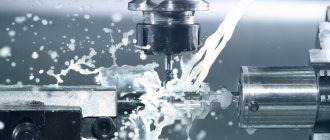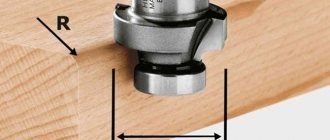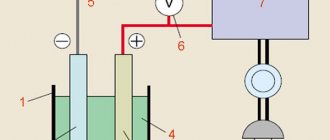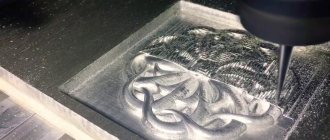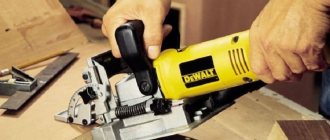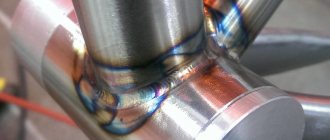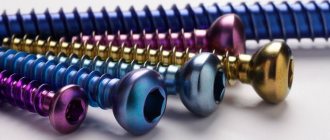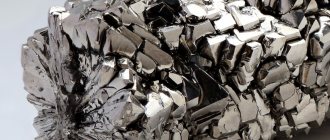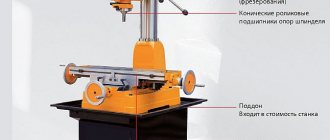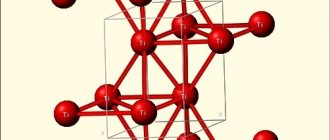Titanium is one of the strongest metals, with high corrosion resistance and ductility. Light and hard, it can be used both in pure form and as an additive to alloy steels and special-purpose alloys. Titanium products and blanks are in demand in almost all areas of industry, although their active use began not so long ago. And this is primarily due to the difficulties of metal processing.
Titanium milling
The material really has extremely low machinability rates.
For comparison: if for unalloyed and not thermally strengthened steel this figure is 100%, and for annealed steel it reaches 60, then commercially pure titanium is only 43% malleable, and annealed steel is 25% malleable. Even with intensive and high-speed CNC milling of titanium, the manufacturer may encounter:
- with premature wear of the tool edge. The reason is excessive heating of the cutting area;
- with a vibration effect that occurs due to the ability of the metal to “spring”.
Thus, working with titanium means frequent replacement of cutters and a decrease in the productivity of operations in general.
However, the demand for metal in various industries, including strategic ones, constantly pushes science towards new developments. One of the technical solutions to the problem is the latest generation of multi-axis machines equipped with a powerful drive. They make it possible to process even ultra-strong titanium at high speeds and fulfill large-scale orders.
Conditions for processing titanium alloys
Like any mechanical processing, titanium milling is several times more complex than similar technological operations with alloys based on carbon steel or aluminum. The specific features of the material significantly complicate the process, so the highest demands are placed on the wear resistance of the equipment used and the professionalism of the operators.
Conditions for ensuring high quality parts and reducing energy costs:
- the use of high-quality and wear-resistant tools made on the basis of hard alloys and durable steels;
- processing at minimum speed;
- continuous supply of coolant.
In modern conditions, processing of titanium workpieces is carried out using complex equipment that allows combining several operations. Such machining centers operate on the principle of a cyclical production process. Sequential processing of the workpiece is performed using multi-profile attachments. This approach ensures optimal processing speed and efficiency.
It is recommended to mill precious alloys at low speeds and low feed rates, using plenty of coolant. The cutting edges of the tool must be made of hard alloys or heavy-duty steel.
During processing, the part must be securely fixed on the machine. Typically machining is performed on equipment equipped with an ISO 50 taper spindle with a short reach. Particularly difficult is the processing of workpieces with internal grooves, recesses, pockets, chamfers and thin walls. The required configuration is achieved by using a long cutting tool, which is easily deformed during operation.
Titanium milling
The key to successful milling is the combination of the “right” tool and the choice of the most effective technology.
However, there are general rules, following which, production will avoid most difficulties. As is known, during the milling process, the tool, in contact with the metal, makes arcuate movements. The smaller the arc formed, that is, essentially, the width of the cut, the less thermal load the cutting part will experience. The supply of coolant (cutting fluid), which is carried out under pressure, helps reduce the heating of the working area and the depreciation of the tool. The springiness of titanium described above is successfully combated by correctly fixing the workpiece and tool and ensuring the rigidity of all working elements.
Selection of the necessary tool
The requirements for machining tools for titanium are quite high and cutters with replaceable heads used on CNC machines are mainly used for work. During the working process, the tool is subject to wear: abrasive, adhesive and diffuse. With diffuse wear, mutual dissolution of the material of the cutting tool and the titanium workpiece occurs. These processes are especially active at temperatures of 900 - 1200 °C.
The selection is carried out taking into account the processing mode:
- during the preliminary process, round or square plates (iC 19) are used, made of a special alloy H 13 A without coating;
- in the intermediate process, round plates are used, made of alloy H 13 A, GC 1115 with PDV coating;
- In the main process, inserts with grinding cutting edges made from alloys H 13 A, GC 1105 and CD 10 are used.
When influencing a titanium workpiece using special cutters, high-precision CNC lathes and various modes are used to ensure automation of the operations and high quality of manufactured parts. The dimensions of the finished part must have zero or minimal deviation from the specified parameters according to the technical specifications.
Automatic titanium processing: milling
When CNC milling titanium, negative processes are minimal, and the likelihood of thermal cracks, build-ups, burrs and other defects appearing on parts is completely eliminated. The list of operations that the programmable machine performs is also impressive. He can:
- cut into the workpiece;
- form ledges in it;
- apply a thread to the surface;
- carve pockets, grooves and other cavities into parts, as well as perform other actions.
Modern milling machines are not just machines, but machining centers. They ensure movement of the workpiece in three planes - along the x, y and z axes, with a spindle speed of more than 10 thousand revolutions per minute and higher. The load on the table can be hundreds of kilograms.
Some features of cutting and drilling titanium
Cutting blanks is a very complex technological process, accompanied by the use of special tools and equipment. Sheets are cut with guillotine shears, and billets from long products are sawn with a mechanical saw. Small diameter rods are cut using lathes.
Milling titanium remains the most difficult way to process it. It sticks to the teeth of the tool (cutter), which makes working with the workpiece much more difficult. Therefore, for this method, tools made of hard metal alloys are used, and the processing process is accompanied by the use of cooling lubricants and liquids that have high viscosity.
When performing drilling operations, it is important that chips generated as a result of drilling do not accumulate in the drainage channels, otherwise this can lead to premature wear and breakage of the tool. When drilling, cutters made of high-speed steel are used.
Titanium milling in a metalworking shop
Many years ago, when fulfilling the first orders for CNC milling of titanium, we sought to organize the work in such a way as to reduce labor costs as much as possible and offer customers the best possible prices.
Today our machine park is ready to fulfill orders of any complexity at the minimum cost for titanium processing. We produce piece and serial products, we work with customers not only from the capital, but also from the regions. We are ready for both long-term cooperation and force majeure - when the project needs to be completed quickly but efficiently.
Do you have “special” circumstances that are not listed here? Call or leave a request - and we will discuss the terms of our cooperation today.
Processing tool
The requirements placed on tools for processing materials are quite high. Most often, processing of titanium and alloys is carried out using cutters that have removable heads, and they are installed on CNC machines. During operation, the working tool is subject to abrasive, adhesive and diffuse wear. Particular attention should be paid to diffuse wear, since at this time the process of dissolution of both the cutting material and the titanium workpiece occurs. These processes occur most actively if the temperature is in the range from 900 to 1200 degrees Celsius.
Type of cutter: 1 or 2 blades?
In advertising production
Most often, 1 and 2-flute cutters are used, less often 3-flute cutters.
Four-blade or multi-blade cutters cannot cut thick chips in soft materials and are generally not used. Their main problem when milling soft
materials is “baking” in the cavities of the cutter. Single-flute cutters provide better chip evacuation due to a more spacious cutter flute. Special cutters for aluminum have a large groove. Particularly advantageous when machining soft aluminum, in addition to polished cutters, are coatings with Titan-Nitrid (TiN).
The choice of the “ideal” type of cutter always depends on the material being processed:
When milling “soft” materials:
soft plastics (PVC, plexiglass, polystyrene foam), wooden materials (wood, fiberboard, plywood, chipboard), soft grades of aluminum and sandwiches (aluminum / plastics) benefit from sharp 1-flute cutters.
Since here the problem of faster dulling is preferable to the risk of clogging and breakage of the cutter. For hard plastics,
sharp 2-way ones with a fishtail profile are suitable.
When machining harder metals
such as brass, we can recommend 2-flute cutters with a flat grind.
When milling extremely rigid structural steel
or very high-quality steel, three or four entry cutters are used.
Cross-cut single cutter Single blade leaves large open space for chip evacuation
Three-flute cutter in cross section Three blades significantly reduce the space for chip evacuation
Differences between a cutter and an engraver
Many people use the terms “Cutter” and “Engraver” interchangeably. However, we are talking about two different tools. An engraver is a simple tool, splitting a cylinder in half, followed by a back grind. The shape may vary; the most common are triangular. Unlike milling cutters, they do not have a spiral chute to drain chips.
Milling cutter material: HSS or carbide?
In advertising technology, carbide cutters are predominantly used. Carbide (HM) is an expensive, man-made product that is agglomerated from fine powders (e.g. Wolfram-Carbid). During the agglomeration process, the shape of the cutter is immediately created and subsequently does not change (it is only sharpened). Carbide is extremely hard and wear-resistant, however, it is susceptible to vibration and shock. It is important when using HM cutters to have a stable, possibly heavier and more massive machine, a spindle with precise rotation and high-quality clamping collets. The material to be milled must be rigidly and motionlessly fixed on the machine. High speed steel (HSS) is used primarily where carbide is too sensitive: when milling stainless steel sheets, on shaky machines, or in cases where the clamping rigidity is not sufficiently ensured. HSS wears out much faster, but there is less risk of premature failure due to its viscosity. The life of a coated HSS cutter is significantly increased. For example, titanium nitride (TiN) increases service life by six times. Titan-Nitrid is significantly stiffer than HSS and also stiffer than HM. With Titan-Nitrid coating, HM tools also last longer, although the difference in hardness is negligible. The coverage has a more significant effect on the number of revolutions and feed. It can be increased and thus the processing time can be shortened. When milling aluminum, TiN prevents the dreaded baking of aluminum in the cutter. The coating acts like Teflon in a frying pan (the chips slide)
